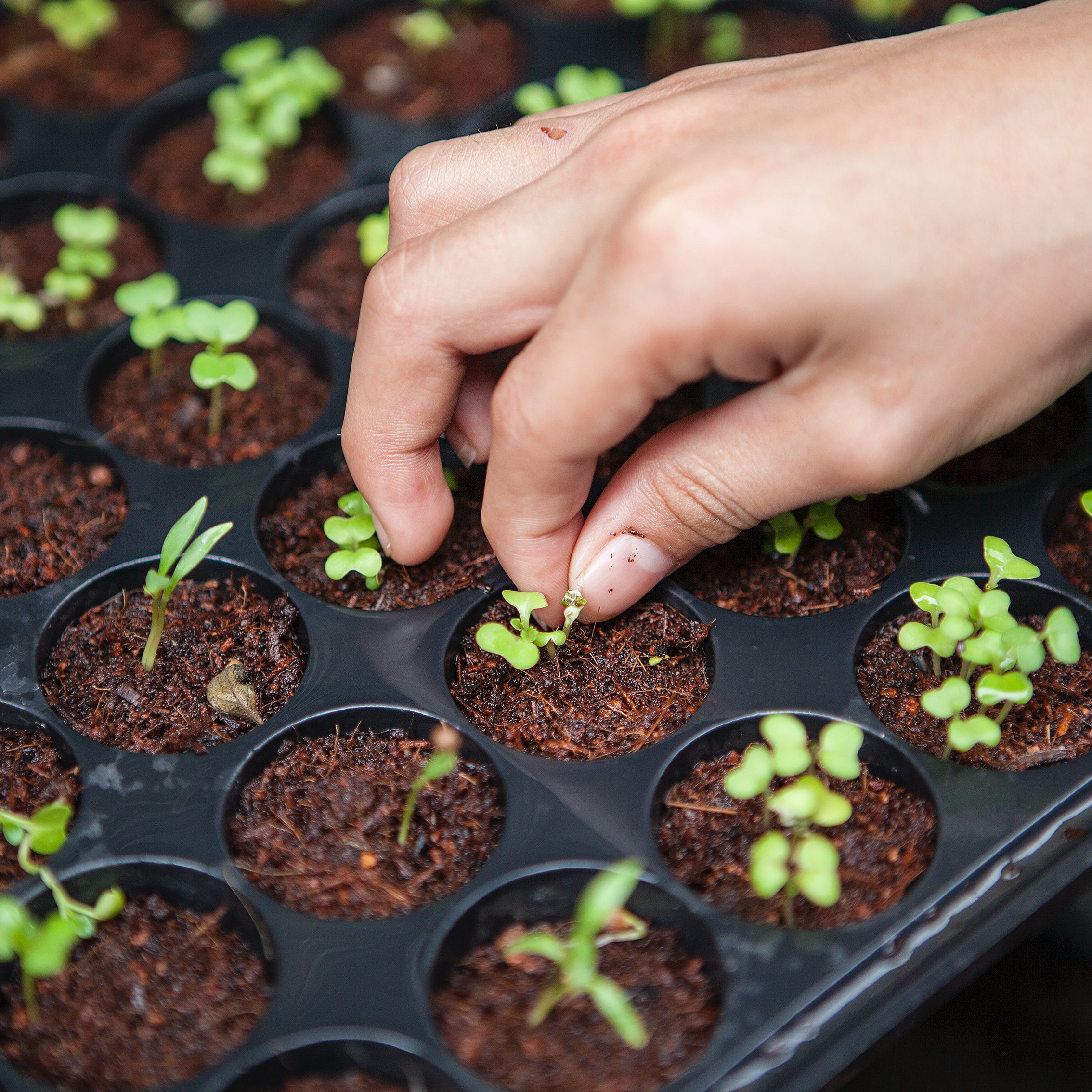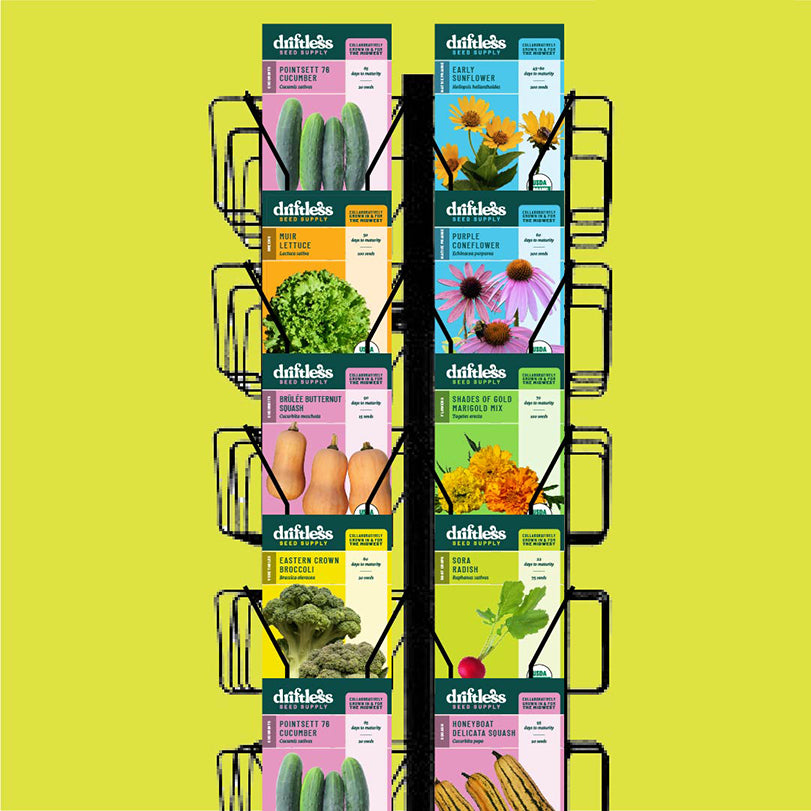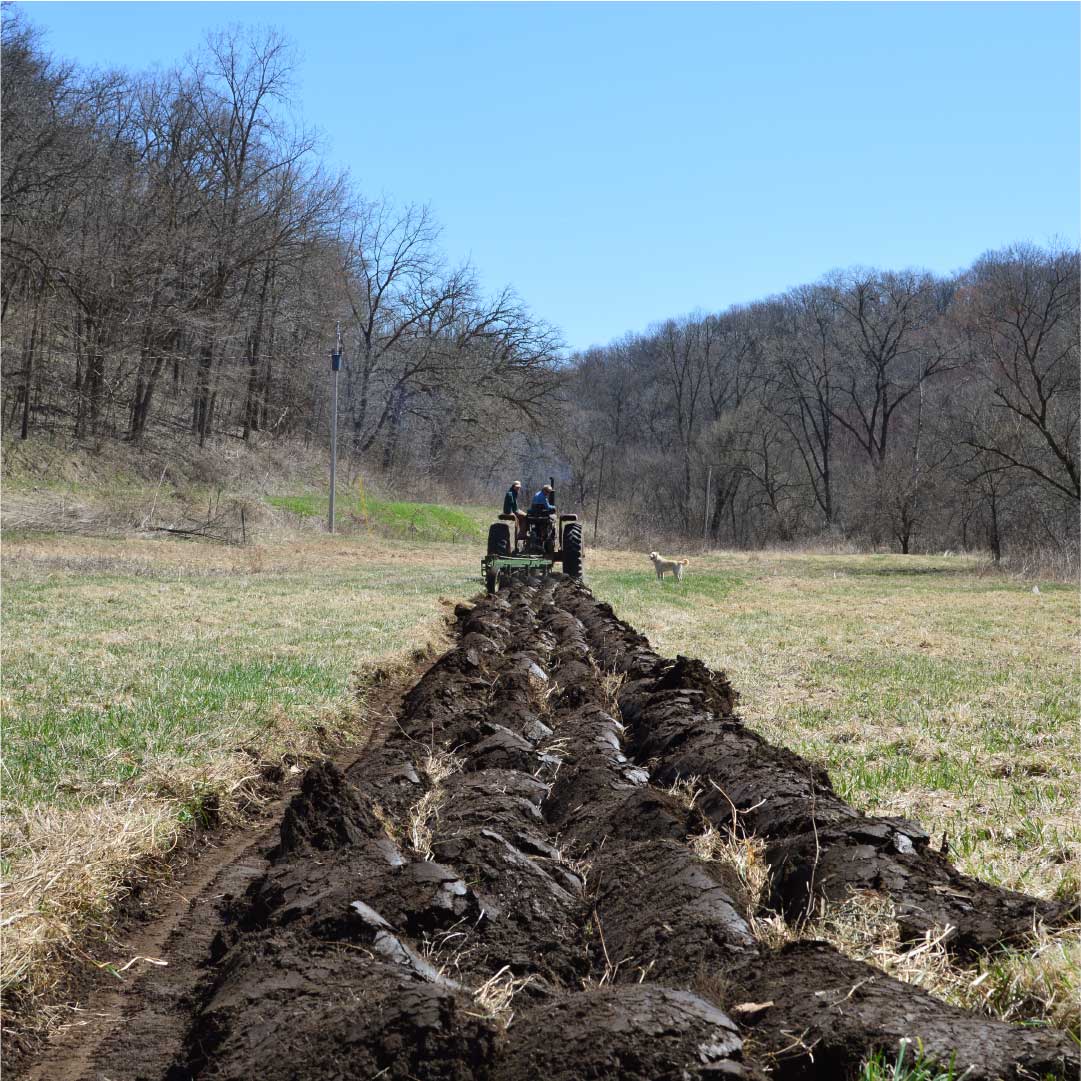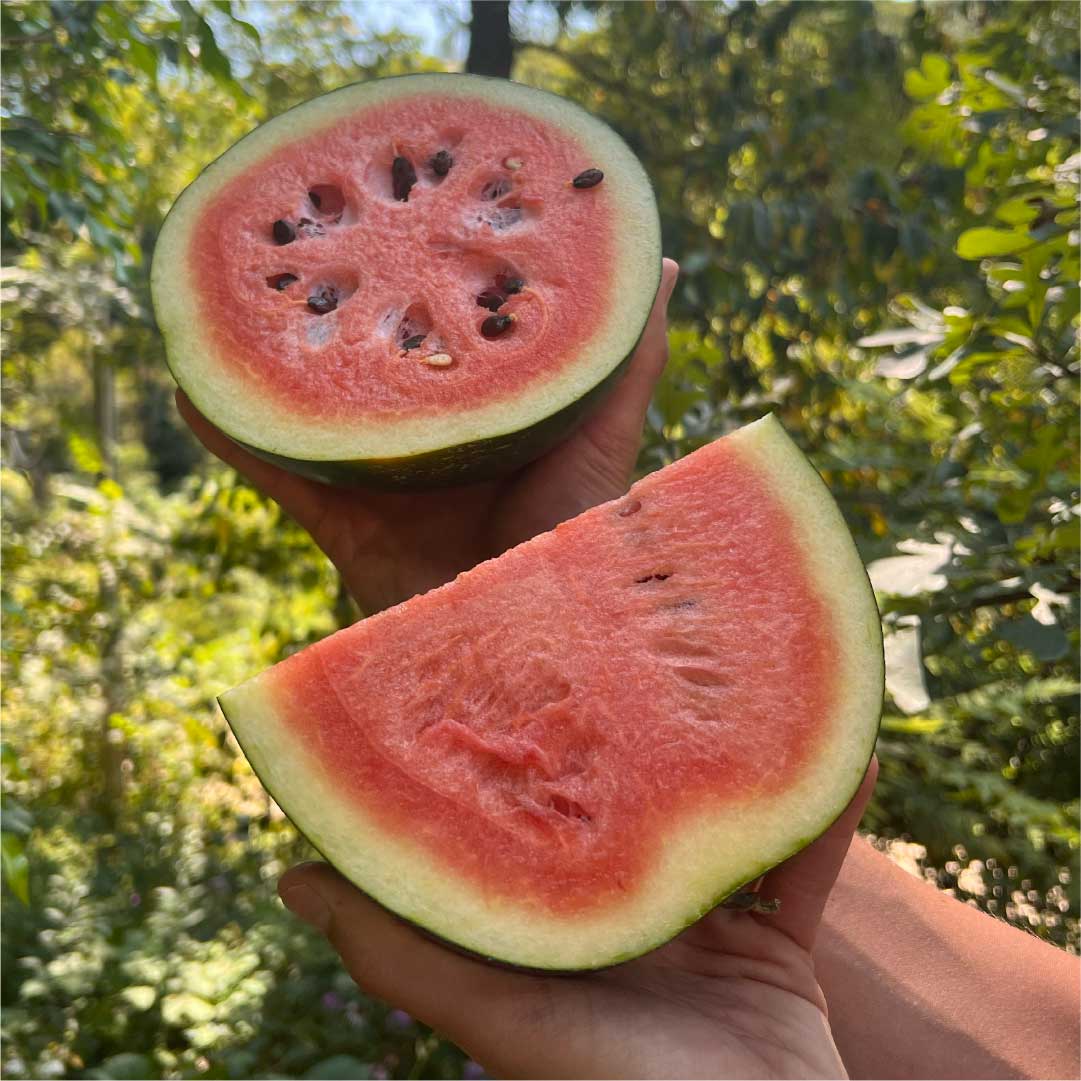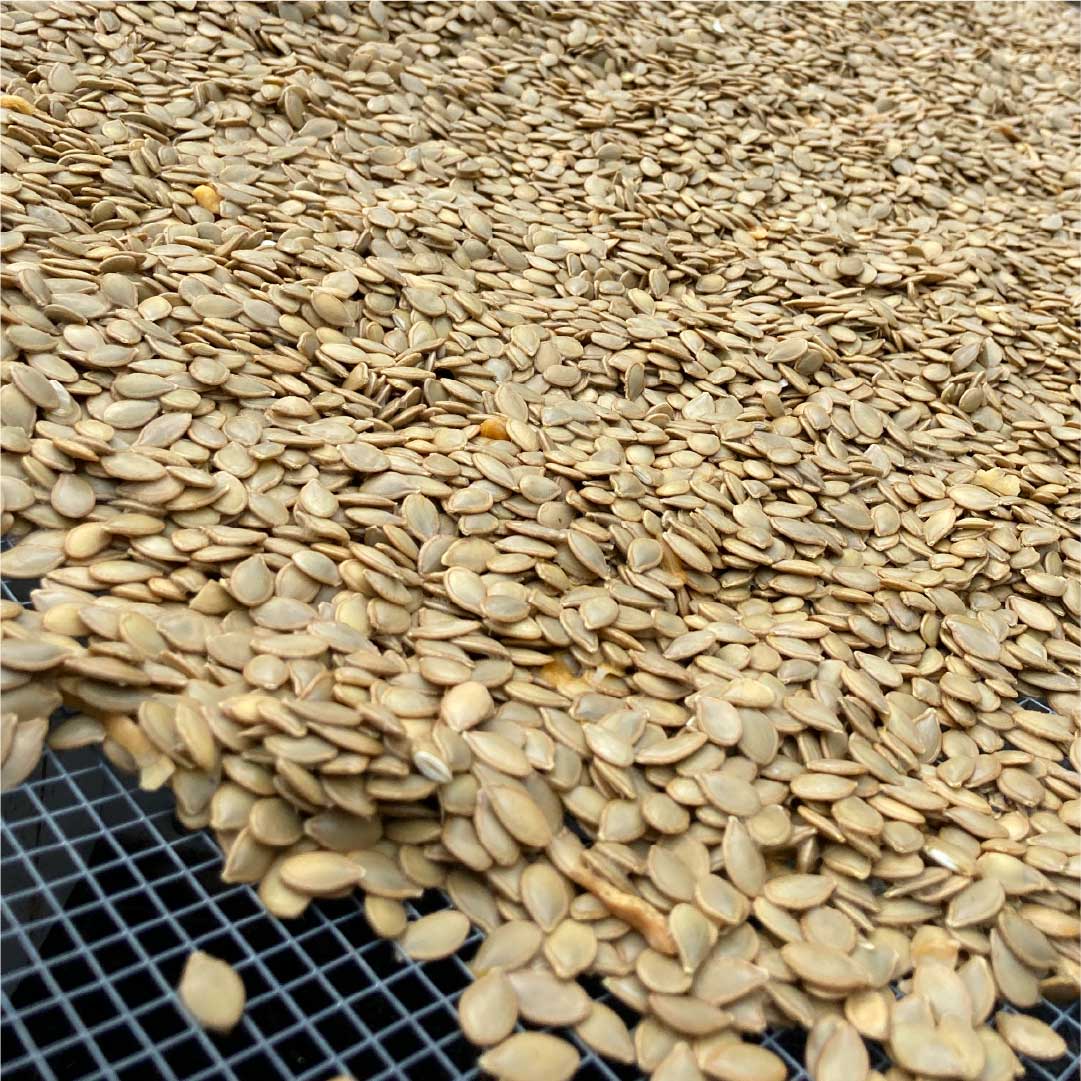Introduction
Garlic (Allium sativum) has been cultivated for over 5,000 years and is valued worldwide as both a culinary staple and medicinal plant. Originating in Central Asia, garlic spread across Europe and the Mediterranean, where it became an essential seasoning and a symbol of health and protection. Immigrants brought garlic to North America, where it has become a key crop for both small-scale and commercial growers. In the Midwest, garlic is well-suited to the climate when fall-planted and overwintered, producing robust bulbs ready for harvest the following summer. Today, garlic is prized for its pungent flavor, versatility in cooking, and health benefits.
Variety Selection
Hardneck Garlic (best for the Midwest): Produces scapes and excels in cold winters.
- Chesnok Red (Purple Stripe): Outstanding roasting/baking quality with a sweet, rich flavor; typically 8–10 uniform cloves; stores ~5–6 months when cured well. Great all-purpose kitchen garlic.
- Armenian (Porcelain): Very cold-hardy, consistently large bulbs with 4–6 jumbo, easy-peel cloves; bold “buttery with after heat” flavor; strong yields.
- German White (Porcelain): Extremely winter-hardy; 4–6 large cloves; robust flavor that mellows when cooked; good storage (often ~6 months).
- Music (Porcelain): Big, easy-peel cloves; excellent yields in northern trials; notable cold tolerance; exceptional storage for a hardneck (often 9–12 months).
Softneck Garlic: Longer storage but less winter-hardy; best in protected sites or southern Midwest.
Site Selection and Soil Preparation
- Sun Exposure: Full sun is essential for strong bulb development.
- Soil Type: Loose, well-drained loam with high organic matter. Heavy clay can cause misshapen bulbs.
- Soil pH: 6.0–7.0.
- Soil Amendment: Incorporate compost or aged manure pre-plant to boost fertility and tilth.
Planting
- Timing: Plant in fall (late Sept.–mid-Oct. upper Midwest), 4–6 weeks before freeze-up.
- Spacing: 4–6" in-row; 12–18" between rows.
- Depth: 2–3" deep, point up.
- Notes: Plant only large, healthy cloves for biggest bulbs.
Irrigation
- Watering Needs: ~1" per week during spring growth.
- Method: Drip preferred to keep foliage dry, or water at base of plants and not overhead.
- Critical Period: Maintain even moisture May–June during bulb sizing; taper as tops yellow in July.
Fertilization
Adjust to soil tests. Typical organic NPK targets per acre:
- Nitrogen (N): 120 lb/ac total, split between pre-plant, one side-dress early spring and again in May (feather meal, blood meal, fish emulsion).
- Phosphorus (P₂O₅): 40–60 lb/ac pre-plant (bone meal, rock phosphate). Base Phosphorus applications on soil test results.
- Potassium (K₂O): 60–80 lb/ac pre-plant (sulfate of potash, greensand, langbeinite, wood ash). Base Potassium on soil test results.
Garlic grows best when nitrogen is abundant but carefully timed.
Balanced P & K, aligned to soil test data, supports bulb formation and health.
Micronutrient supplementation, especially sulfur and trace minerals, can elevate flavor, yield, and plant resilience, particularly in lower-fertility soils. Use azomite pre-plant, kelp meal in spring, or foliar applications of kelp products to promote healthy micronutrient levels.
Pest and Disease Management
Key Field Pests
- Onion Maggot: Rotate 3–4 years away from Alliums; use row cover on small plantings.
- Thrips: Encourage beneficials; consider neem or spinosad if thresholds are exceeded.
- Garlic Root Knot Nematode: This is one of the most problematic garlic pests. The key is to use clean seed. Do not rotate back to soil that has previously had an infestation!
Field & Post-Harvest Diseases
Use clean seed, careful harvest/handling, and proper curing/storage to minimize losses. Consider applying a beneficial microbe product like Cease to boost the plant immune system and compete with diseases.
- Fusarium bulb rot (F. proliferatum): Water-soaked lesions from clove tip downward; infected cloves should not be eaten/sold or saved for seed due to mycotoxin risk.
- Fusarium basal rot (F. oxysporum f.sp. cepae, F. culmorum): Rot progresses upward from basal plate; persists in soil for years—rotate out of Alliums ≥4 years; don’t plant any cloves from a symptomatic bulb.
- Black mold (Aspergillus niger/ochraceus): Black spores between scales; often enters via bruises; prevent with gentle harvest and low-RH storage; do not consume infected bulbs.
- Neck rot (Botrytis porri): Starts near soil line; cool, wet late spring favors infection; ensure airflow, avoid overhead irrigation, don’t plant infected bulbs.
- Blue mold (Penicillium hirsutum): Blue-green mold on scales; spreads via wounds during cracking; cold (<40°F), low RH, and ventilation suppress development.
- Embellisia skin blotch/canker (Embellisia allii): Cosmetic flecking on outer scales; proper drying/storage (RH <70%) slows disease.
- Bulb mites (Aceria tulipae, Rhizoglyphus spp.): Feed at basal plate; create entry points for fungi; avoid planting infested seed.
- Stem and bulb nematode (Ditylenchus dipsaci): Causes shrunken, desiccated bulbs; strict 4-year (or longer) rotation out of Alliums and avoid planting infested seed.
- White rot (Sclerotium cepivorum): Highly destructive; sclerotia persist 10–15 years; scrupulous sanitation and avoidance are critical.
Post-Harvest Prevention Essentials
- Harvest on time; avoid bruising and pulling without loosening soil first.
- Cure 10–14 days at 75–85°F with strong airflow; avoid >90°F and direct sun.
- Store long-term at 30–39°F and 60–70% RH with ventilation; avoid 40–50°F (promotes sprouting).
Direct link to our favorite fact sheet: https://www.perennia.ca/wp-content/uploads/2020/05/Fact-Sheet-Garlic-Post-Harvest-final.pdf
Harvesting
- Timing: Lift when lower leaves are brown but 5–6 upper leaves remain green (mid–late summer).
- Method: Loosen with a fork and lift carefully to prevent bruising.
- Scapes: For hardnecks, harvest curly scapes in June to promote larger bulbs and for delicious early-season product.
Post-Harvest Handling
- Curing: Hang or rack bulbs in warm, shaded, well-ventilated space 10–14 days until necks constrict and outer skins are papery.
- Cleaning: Brush off soil after curing; do not wash.
- Storage: Cool (32–50°F), dark, dry, ventilated. Softnecks store the longest; Porcelains like Music can also store exceptionally well.
Culinary Uses
From raw zing in dressings and pestos to sweet, mellow roasted cloves, garlic anchors cuisines worldwide. Hardneck scapes are excellent sautéed, grilled, pickled, or blended into pesto.
Temperature Tolerances
- Cold: Requires winter chilling (vernalization) for proper bulb formation—Midwest winters are ideal.
- Heat: High heat speeds maturity; mulch moderates soil temps and conserves moisture.
- Mulch: 3–6" clean straw/leaves after planting for freeze protection, weed suppression, and moisture conservation.
Additional Tips
- Use disease-free seed garlic (not grocery bulbs).
- Weed diligently—garlic competes poorly.
- Diversify with multiple hardneck cultivars (e.g., Chesnok Red, Armenian, German White, Music) to broaden harvest window and storage options.



